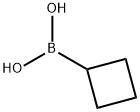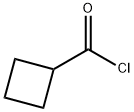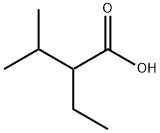1,2,3,4-Cyclobutanetetracarboxylic Dianhydride
Synonym(s):1,2,3,4-Cyclobutanetetracarboxylic dianhydride;Cyclobutanetetracarboxylic acid dianhydride;Cyclobutanetetracarboxylic dianhydride;Maleic anhydride cyclic dimer
- CAS NO.:4415-87-6
- Empirical Formula: C8H4O6
- Molecular Weight: 196.11
- MDL number: MFCD00004944
- EINECS: 224-577-5
- SAFETY DATA SHEET (SDS)
- Update Date: 2025-11-28 13:50:20

What is 1,2,3,4-Cyclobutanetetracarboxylic Dianhydride?
Description
Cyclobutane-1,2,3,4-tetracarboxylic dianhydride (CBDA) is an anhydride with a cis-trans-cis configuration. It can be used to synthesise polyimide films. Polymer films have excellent heat resistance, are transparent and colourless, with transmittance ranging from 81.5% to 85.8%, and are suitable for use in high quality display materials such as liquid crystal displays. The polymers made with pyrrolidine dianhydride instead of CBDA are dark yellow in colour and have a lower transmittance in the range of 48% to 63.9%.
Chemical properties
White to light yellow solid
The Uses of 1,2,3,4-Cyclobutanetetracarboxylic Dianhydride
cyclobutane-1,2,3,4-tetracarboxylic dianhydride and diamine monomer are used for preparation a polyimide (PI), the type of polyimide has excellent electrical characteristics and optical type, with the material prepared the PI film, in addition to having a higher rate cast visible outside, and can withstand high temperatures thirty-four Baidu. Its performance is very good, is the preparation of a liquid crystal display with an ideal material for the film.
The Uses of 1,2,3,4-Cyclobutanetetracarboxylic Dianhydride
Reactant for:
- Preparation of biologically and pharmacologically active molecules
- Preparation of photosensitive polyimide material for high performance organic thin-film transistors
- Selective crosslinking of polyimide for photonic devices
Preparation
Preparation of 1,2,3,4- cyclobutanetetracarboxylic acid dianhydride (CBDA)To a 2L quartz glass photoreactor equipped with sixteen UV lamps (300nm) , a stirrer and a cooler were attached and 250ml of ethyl acetate and 100g of maleic anhydride were added thereto followed by stirring for complete mixing. To avoid an excessive temperature increase, an air-cooling type cooler was first run and then UV light was illuminated for a photoreaction for 24h with stirring so as not to have the reactants adhered to the reactor walls. As a result, 71g of white solid was obtained. After the filtration, the white solid was dried for 24h in a vacuum dryer at 60°C Thus-obtained solid was then added to acetic anhydride, dissolved therein and slowly heated to 150°C followed by the reaction for 24h . Hot reaction solution was filtered through a filter paper to remove impurities and kept in a freezer at the temperature of 0°C or less for recrystallization for 24h to obtain a yellow solid. Thus-obtained solid was filtered and washed three times with 1,4-dioxane to remove acetic anhydride, and then dried in a vacuum oven at 60°C for 48h to obtain 64g of 1, 2, 3, 4 -cyclobutane tetracarboxylic acid dianhydride (CBDA) .

Properties of 1,2,3,4-Cyclobutanetetracarboxylic Dianhydride
| Melting point: | >300 °C (lit.) |
| Boiling point: | 545.3±50.0 °C(Predicted) |
| Density | 1.823±0.06 g/cm3(Predicted) |
| storage temp. | under inert gas (nitrogen or Argon) at 2-8°C |
| solubility | soluble in Toluene |
| form | powder to crystal |
| color | White to Light yellow |
| Sensitive | Moisture Sensitive |
| BRN | 1430553 |
| CAS DataBase Reference | 4415-87-6(CAS DataBase Reference) |
Safety information for 1,2,3,4-Cyclobutanetetracarboxylic Dianhydride
| Signal word | Warning |
| Pictogram(s) |
 Exclamation Mark Irritant GHS07 |
| GHS Hazard Statements |
H315:Skin corrosion/irritation H319:Serious eye damage/eye irritation H335:Specific target organ toxicity, single exposure;Respiratory tract irritation |
| Precautionary Statement Codes |
P261:Avoid breathing dust/fume/gas/mist/vapours/spray. P264:Wash hands thoroughly after handling. P264:Wash skin thouroughly after handling. P271:Use only outdoors or in a well-ventilated area. P280:Wear protective gloves/protective clothing/eye protection/face protection. P302+P352:IF ON SKIN: wash with plenty of soap and water. P305+P351+P338:IF IN EYES: Rinse cautiously with water for several minutes. Remove contact lenses, if present and easy to do. Continuerinsing. |
Computed Descriptors for 1,2,3,4-Cyclobutanetetracarboxylic Dianhydride
New Products
Indole Methyl Resin tert-butyl 9-methoxy-3-azaspiro[5.5]undecane-3-carboxylate Boc-His(Boc)-OH 2-CTC Resin 4-Chloro-7-tosy1-7Hpyrrolo[2,3-d]pyrimidine 5,7-Dibromo-1H-indole 2,5-dichloro-N-hydroxy-4,6-dimethylpyridine-3-carboximidamide 2,2-Dimethoxy-7-azaspiro[3.5]nonane hydrochloride 4-chloromethyl-5-methyl-1,3-dioxol-2-one (DMDO-Cl) R-2-BENZYLOXY PROPIONIC ACID 1,1’-CARBONYLDIIMIDAZOLE 1,1’-CARBONYLDI (1,2-4 TRIAZOLE) N-METHYL INDAZOLE-3-CARBOXYLIC ACID 4-((2-hydroxyethyl)thio)benzoic acid 1-(TERT-BUTOXYCARBONYL)-2-PYRROLIDINONE Methyl 6-methylnicotinate 3-Pyridineacrylic acid tert-Butyl carbazate TETRAHYDRO-2H-PYRAN-3-OL 2-((4-morpholinophenylamino) (methylthio) methylene) malononitrile 3-(4-morpholinophenylamino)-5-amino-1H-pyrazole-4-carbonitrile 2,4-dihydroxybenzaldehyde 1,3-Diethyl-1,3-Diphenylurea Methyl 2-methylquinoline-6-carboxylateRelated products of tetrahydrofuran








You may like
-
 1,2,3,4-Cyclobutanetetracarboxylic Dianhydride CAS 4415-87-6View Details
1,2,3,4-Cyclobutanetetracarboxylic Dianhydride CAS 4415-87-6View Details
4415-87-6 -
 1,2,3,4-Cyclobutanetetracarboxylic Dianhydride (purified by sublimation) CAS 4415-87-6View Details
1,2,3,4-Cyclobutanetetracarboxylic Dianhydride (purified by sublimation) CAS 4415-87-6View Details
4415-87-6 -
 Cyclobutane-1,2,3,4-tetracarboxylic dianhydride CAS 4415-87-6View Details
Cyclobutane-1,2,3,4-tetracarboxylic dianhydride CAS 4415-87-6View Details
4415-87-6 -
 Cyclobutane-1,2,3,4-tetracarboxylic dianhydride CAS 4415-87-6View Details
Cyclobutane-1,2,3,4-tetracarboxylic dianhydride CAS 4415-87-6View Details
4415-87-6 -
 Pyridine 99.5% HPLC /UV SpectroscopyView Details
Pyridine 99.5% HPLC /UV SpectroscopyView Details
110-86-1 -
 Dibutyl PhthalateView Details
Dibutyl PhthalateView Details
84-74-2 -
 Imidazole Spot supply, competitive priceView Details
Imidazole Spot supply, competitive priceView Details
288-32-4 -
 Thiourea 99% ARView Details
Thiourea 99% ARView Details
62-56-6
